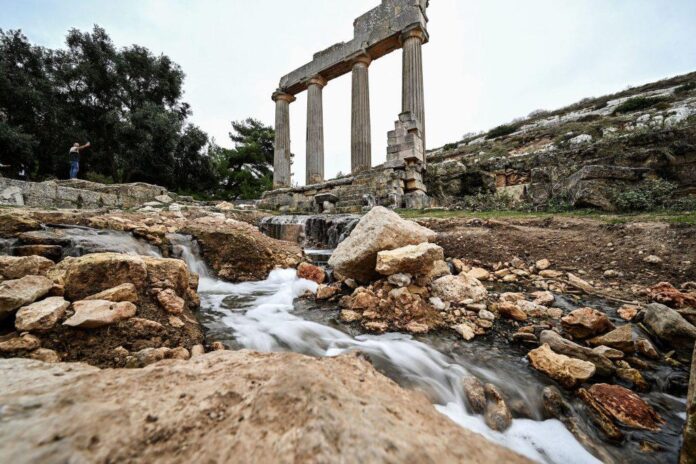The floods that killed more than 5,000 people in Libya in early September damaged the ruins of Cyrene, a 2,600-year-old Greek settlement in the mountains above the devastated city of Derna.
Storm Daniel produced wind speeds of up to 80 miles an hour and dumped an estimated three feet of water on northeastern Libya, levels unprecedented since records began in the mid-1800s. At Cyrene, a UNESCO World Heritage Site since 1982, earth and stones were washed away by the waters.
Among the impacts so far observed at Cyrene by local authorities is the mud and rubble now occupying the site’s baths. Removing the flood debris will require specialized cleaning.

Cyrene is 37 miles west of the Libyan city of Derna. Photo: Ozan Kose/Getty Images.
While the damage is not as severe as initially feared, the flooding has destabilized the ground and could potentially affect the monuments in the near future. “I’m pretty sure, and expecting, that one of these landmarks could collapse due to the excessive underground water during the winter,” Adel Boufjra, a local antiquities department official, told Reuters.
Despite the damage, the deluge of water also revealed a previously unknown Roman drainage system, one Boufja says is a distinctive discovery for the city.
Cyrene, known locally as Shahhat, is one of Libya’s leading archeological sites. Originally established as a Greek colony in 631 B.C.E, it thrived as a regional trading hub and was known for its exports of horses and silphium, a now unknown plant that was highly valued in antiquity. It later developed into an intellectual center as part of the Ptolemaic Empire. It enjoyed two centuries of prosperity under Roman rule but began a gradual demise in the 2nd century C.E.

Aerial view shows water flowing through the ruins of Cyrene. Photo: Ozan Kose/Getty Images.
The site has been a tourist attraction since the 18th century. To date, three main areas of Cyrene have been excavated: a forum and basilica; the fountain and sanctuary of Apollo, after whom the city was dedicated; and the center of the Roman town, which boasts the site of a temple to Zeus, which is bigger than the Parthenon in Greece.
UNESCO did not respond to a request to comment.
More Trending Stories:

























